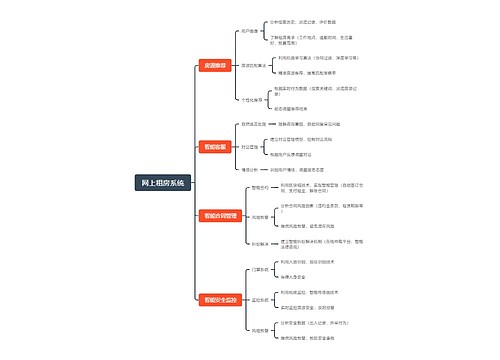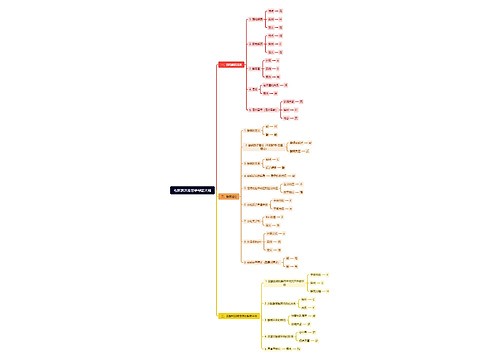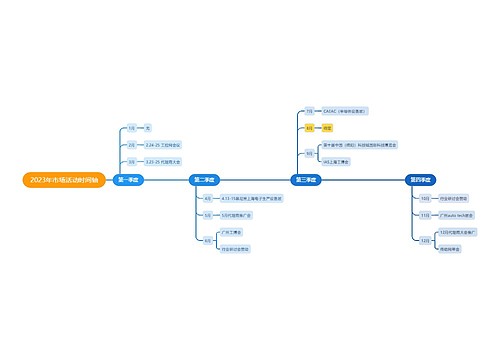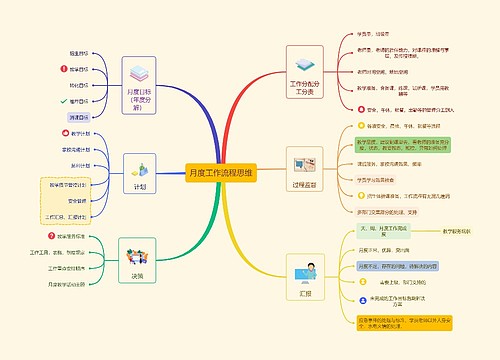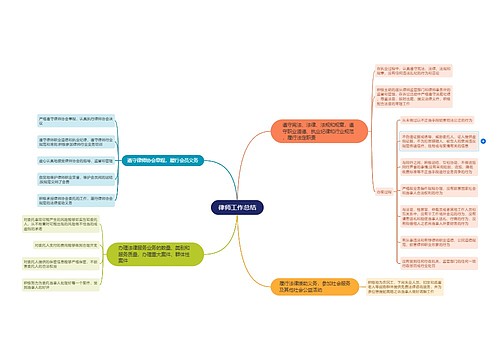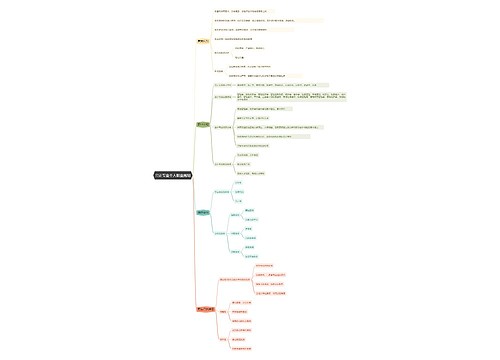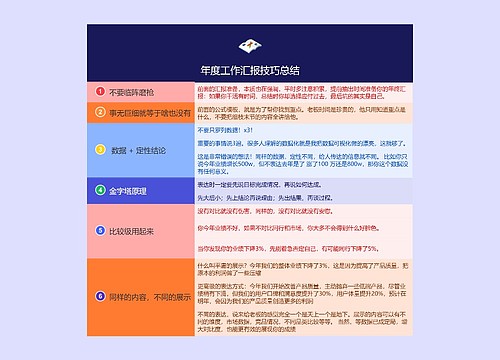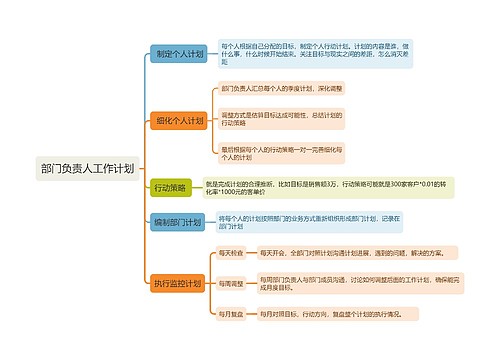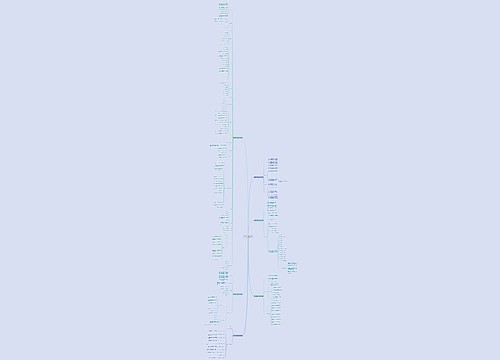
英语系命题大纲范文推荐6篇思维导图
回憶褶皺
2023-05-08

英语系命题大纲范文推荐6篇
英语系命题大纲范文 第一篇一、英语谚语的概述.对谚语的一般定义,并概括英语谚语的基本特点(3—5条).结合谚语与语言的关系,简要论述英语谚语来源的一般性概述这一部分大体写2000字。
树图思维导图提供《英语系命题大纲范文推荐6篇》在线思维导图免费制作,点击“编辑”按钮,可对《英语系命题大纲范文推荐6篇》进行在线思维导图编辑,本思维导图属于思维导图模板主题,文件编号是:cb09b022af546016ad94751bfde4a5a9
思维导图大纲
相关思维导图模版
英语系命题大纲范文推荐6篇思维导图模板大纲
英语系命题大纲范文 第一篇
一、英语谚语的概述
.对谚语的一般定义,并概括英语谚语的基本特点(3—5条)
.结合谚语与语言的关系,简要论述英语谚语来源的一般性概述
这一部分大体写2000字。
二、西方的宗教传统与英语谚语的本源关联
对基督教的历史做一简单的概述,同时对《圣经》对基督教的核心意义与价值做一简单的说明
. 简述西方的宗教传统,或者基督教的历史
. 对基督教的基本信义做一简单的概述,从下述几个方面:
(1)对基督教的只信仰一个唯一的上帝,不容许进行偶像崇拜;
(2)原罪的观念与救赎的观念:涉及末世审判、救赎恩典和得救的观念
(3)爱是基督教信仰的核心,核心是爱上帝,同时爱每个人
归根结底,基督教是一种高级的精神性宗教,深深地浸透入了西方世界的每一个角落
英语谚语与基督教的关系,特别是《圣经》的'英译对英语的影响
(1)《圣经》历史上的英译本,主要讲钦定本的诞生和影响(譬如扩大了英语的词汇量、增强了英语的表意功能、增加了英语的表意手段等等)
(2)通过一些简单的例证来说明从拉丁语翻译到英语这一过程的影响与意义(如可以举例一些特殊的词语、句式等说明,做好这一部分关键是找到好的研究资料)
三、对源于《圣经》的谚语进行分析,揭示其宗教、文化内涵
(选取若干源于《圣经》的谚语进行具体的、细致的分析,以揭示谚语背后的宗教内涵和英语所负载的宗教文化意义。)
1.选取15—20条有代表性的谚语进行分析,
(1)简述一下选取分析对象的标准
首先这些谚语必须来源于《圣经》或者有《圣经》直接引伸出来,
其次这些谚语必须是应用较广,家喻户晓,且包含特定的智慧
(2)对这些谚语进行分析
我们的分析角度或方法是:
1、要将这些谚语放到《圣经》的文本中去,也就是要将其放回到具体的语境中,在具体的故事或圣经人物的言说中领会这些谚语的内涵
2、可以适当的结合这些谚语的修辞、句式结构等来分析
2.对上述谚语分析之后,从若干角度进行文化内涵的总结和概括
这些谚语的内在价值:道德规范、人生智慧、
这些谚语的功能:宗教教化功能、规导劝慰功能、
(这些价值功能关键的根据所选谚语的分析来确定,有新的发现可适当再添加)
这一部分为本文的主体部分,在3500字左右
拟订提纲的步骤与方法
第一步,明确文章的大小题目。在研究文献和确立三论阶段,已经确立了文章的总论点,以及若于不同层次的分论点。从文章的形式上看,这些分论点便是不同层次的大小标题。一般来说,一篇文章至少应设立3个层次的大小标题。文章的总题目加上这些大小标题,便是文章的基本框架,也是写作提纲的主要内容。|
第二步,为大小标题排序。根据总论点的论证需要,以及大小标题之间存在的相互逻辑关系,将这些标题排序,并标注序码。
第三步,材料对号入座。将选定的、将要写进文章中的材料也根据论证的需要分组,并编注序号。然后,分别以序号的形式对号入座,安插在各个大小标题之下。这样,写作提纲便基本完成。
提纲完成之后,还必须进行仔细推敲、反复调整、及时修改。毋庸置疑,调整与修改提纲比全文写完之后再推倒重来,进行大返工要节省很多时间和精力。提纲的修改可以在动笔撰写初稿之前,集中时间和精力进行,以便确立文章的基本框架结构。在撰写初稿的过程中,有时也有必要回过头来再对提纲进行局部的、细节的调整与修订。
英语系命题大纲范文 第二篇
Acknowledgements 4-6
Contents 6-10
List of Figures 10-12
List of Tables 12-20
Abstract 20-22
摘要 23-25
Chapter 1 Introduction 25-32
Purpose of the study and research questions 28-29
Significance of the study 29-30
Organization of the study 30-31
A note on terminology 31-32
Chapter 2 Literature review 32-51
T/TP and coherence in English writing 32-35
Defining coherence 32-33
T/TP as means to realize coherence 33-35
T/TP in EFL/ESL writing 35-42
T/TP and coherence in EFL/ESL writing 35-37
T/TP in EFL/ESL writing as compared to NS writing 37-42
T/TP in English research articles by EFL/ESL scholars 42-44
The factors that influence T/TP in EFL/ESL writing 44-47
Training in T/TP 47-49
Summary 49-51
Chapter 3 Theoretical background 51-70
Systemic Functional Grammar 51-55
Five dimensions of language as a semiotic system 51-53
Three metafunctions of language as a functional system 53-54
Three lines of meaning from metafunctions 54-55
Theme and thematic progression 55-70
Theme 56-62
Thematic progression 62-70
Chapter 4 Research Design 70-88
The participants and the educational context 70-73
Background of the participants and the participating school 70
The allocation of participants to the training 70-71
The sample sizes 71-72
The pilot study 72-73
The interventional procedures 73-74
The questionnaire 74-75
The training 75-80
Considerations behind the training 75-76
The training material 76-79
The role of the researcher as the trainer 79-80
Data analysis 80-86
Analysis of the writing 80-86
Analysis of the questionnaire 86
Ethical considerations 86-88
Informed consent 86-87
Anonymity 87
Harm 87-88
Chapter 5 Results and analysis of pre-training writing 88-115
Comparison of Themes in EEL pre-training writing and CEL pre-writing 88-102
Topical,textual and interpersonal Themes 88-91
Topical Themes:marked and unmarked Themes 91-95
Textual Themes:continuatives,conjunctions and conjunctive adjuncts 95-100
Interpersonal Themes 100-102
Comparison of thematic progression in EEL pre-training writing and CEL pre-writing 102-110
Linear,constant,summative and split progressions 102-107
Back,contextual and new Themes 107-110
Summary 110-115
Chapter 6 Results and analysis of post-training writing 115-137
Comparison of Themes in EEL post-training writing and CEL post-writing 115-129
Topical,textual and interpersonal Themes 115-117
Topical Themes:marked and unmarked Themes 117-121
Textual Themes:continuatives,conjunctions and conjunctive adjuncts 121-126
Interpersonal Themes 126-129
Comparison of thematic progression in EEL post-training writing and CEL post-writing 129-132
Linear,constant,summative and split progressions 129-131
Back,contextual and new Themes 131-132
Summary 132-137
Chapter 7 Results and analysis of pre- and post- training writing 137-155
Comparison of Themes in pre- and post- training writing 137-147
Topical,textual and interpersonal Themes 137-139
Topical Themes:marked and unmarked Themes 139-142
Textual Themes:continuatives,conjunctions and conjunctive adjuncts 142-145
Interpersonal Themes 145-147
Comparison of thematic progression in pre- and post- training writing 147-150
Linear,constant,summative and split progressions 147-149
Back,contextual and new Themes 149-150
Summary 150-155
Chapter 8 Results and analysis of the questionnaire 155-165
Findings from closed questions 155-160
EEL participants general attitude to training on T/TP 155-157
EEL participants perception of the usefulness of the training on T/TP 157-158
EEL participants perception of the learnability of T/TP 158-159
EEL participants perception of the applicability of T/TP in writing 159-160
Findings from open questions 160-164
The changes that occurred 161-162
The perceived difficulty of applying the theory of T/TP in writing 162-163
The reasons for the perceived difficulty in learning 163
EEL participants suggestions for future training 163-164
Summary 164-165
Chapter 9 Discussion 165-195
Findings with regard to research questions 165-187
Chinese college students use of T/TP in pre-training writing 165-172
Chinese college students use of T/TP in post-training writing 172-181
Effects of the training on T/TP in Chinese college students English writing 181-187
Positioning the study within the literature 187-190
T/TP in Chinese college students English writing 187-189
Effects of training on Chinese college students use of T/TP 189-190
Implications 190-194
Pedagogical implication 190-193
Methodological implication 193-194
Limitations 194-195
Chapter 10 Conclusion 195-200
Summary 195-197
Putting everything together 197-199
Suggestions for future work 199-200
Notes 200-202
References 202-214
Appendix 1: Plan for the interventional procedures 214-215
Appendix 2: The post-training questionnaire 215-217
Appendix 3: Training material 217-229
Appendix 4: Teachers guide to the training 229-237
Appendix 5: Consent form for EEL group 237-238
Appendix 6: Consent form for CEL group 238-239
Appendix 7: Consent form for NS group 239
英语系命题大纲范文 第三篇
中文摘要 3-4
ABSTRACT 4
Chapter One Introduction 7-10
Motivation of the present study 7-8
Significance of this study 8
Composition of this thesis 8-10
Chapter Two Literature Review 10-19
Language production 10-14
L1 Production 10-11
L2 Production 11-12
Dimensions of language production 12-14
Theories on oral output 14-15
Skehan’s dual-model system 14
Swain’s Output Hypothesis 14-15
Task Repetition 15-17
Task 15-16
Task repetition 16-17
Relevant studies on effects of task repetition on L2 oral output 17-19
CHARPTER THREE THE CURRENT STUDY 19-25
Research justification and questions 19
Hypothesis 19-20
Methods 20-25
Participants 20-21
Material 21
Research design 21-23
Measures 23-25
Chapter Four Results and Discussion 25-41
Results and Analysis 25-34
Quantitative analysis 25-27
Qualitative analysis 27-34
Discussion 34-41
Fluency 34-36
Complexity 36-38
Accuracy 38-39
interlanguage development path of learner L 39-41
Chapter Five Conclusions 41-44
Conclusion and implication 41-43
Limitations and recommendations 43-44
Acknowledgements 44-45
References 45-49
Appendixes 49-54
A. Instructions of the experiment 49-50
B. The same-content task 50-51
C. The different-content task 51-52
D. Sample of oral pre-task 52-53
E. Sample of oral post-task 53-54
F. Sample of writing repetition task 54
英语系命题大纲范文 第四篇
Abstract 3-4
摘要 5-8
List of Abbreviations 8-9
Chapter One Introduction 9-13
Research Background 9-11
Necessity and Objectives of the Study 11-12
Thesis Organization 12-13
Chapter Two Literature Review 13-27
Defining Explicit Linguistic Knowledge (ELK) and Implicit Linguistic Knowledge (ILK) 13-16
英语系命题大纲范文 第五篇
中文摘要 3-4
ABSTRACT 4
Chapter One Introduction 7-10
Motivation of the present study 7-8
Significance of this study 8
Composition of this thesis 8-10
Chapter Two Literature Review 10-19
Language production 10-14
L1 Production 10-11
L2 Production 11-12
Dimensions of language production 12-14
Theories on oral output 14-15
Skehans dual-model system 14
Swains Output Hypothesis 14-15
Task Repetition 15-17
Task 15-16
Task repetition 16-17
Relevant studies on effects of task repetition on L2 oral output 17-19
CHARPTER THREE THE CURRENT STUDY 19-25
Research justification and questions 19
Hypothesis 19-20
Methods 20-25
Participants 20-21
Material 21
Research design 21-23
Measures 23-25
Chapter Four Results and Discussion 25-41
Results and Analysis 25-34
Quantitative analysis 25-27
Qualitative analysis 27-34
Discussion 34-41
Fluency 34-36
Complexity 36-38
Accuracy 38-39
interlanguage development path of learner L 39-41
Chapter Five Conclusions 41-44
Conclusion and implication 41-43
Limitations and recommendations 43-44
Acknowledgements 44-45
References 45-49
Appendixes 49-54
A. Instructions of the experiment 49-50
B. The same-content task 50-51
C. The different-content task 51-52
D. Sample of oral pre-task 52-53
E. Sample of oral post-task 53-54
F. Sample of writing repetition task 54
查看更多
相似思维导图模版
首页
我的文件
我的团队
个人中心

